Combat ships. Cruisers. When you were enough for several wars
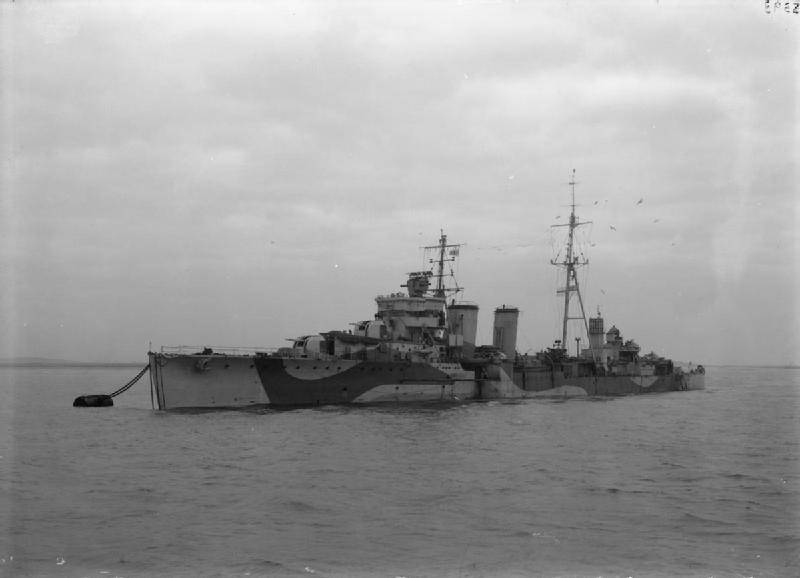
In general, the family of cruisers "Type C" consisted of as many as eight series of ships. However, we will talk about the cruisers that were in the middle of the general series, since the ships came out quite successful and took part in two World Wars. And this is worth a lot, although it cannot be said that the participation was so effective. However, here everyone can judge for himself.
The predecessors of the Type C cruisers were the Aretusa-class light cruisers, which, according to the creators, were to combine the speed of the Active-class cruisers-scouts and the armament of the Town-class light cruisers.
"Aretusa" did not turn out exactly what the Admiralty wanted, in fact, a number of design flaws were identified that could not be corrected by upgrades, so a decision was made to develop a new type of light cruisers.
Indirectly, the Germans helped, who in 1915 laid the foundation for a large series of light cruisers armed with 150-mm guns. The British immediately revised the armament of the cruisers being designed from the usual 102-mm guns to 152-mm ones.
The reshaping of the ships, which were practically already laid down, caused the series to be reduced from six to four ships. Laid down the new cruisers in February-March 1916, and finished very quickly - in March-June 1917.
The first to enter service was "Caledon", after his name and named the type of ships. The first was followed by Calypso, Caradoc and Cassandra.
Cruisers of the Caledon class basically repeated the ships of the previous series. But the seaworthiness, which did not satisfy the customers, had to be improved by changing the main dimensions.
The length of the ship was increased to 137,2 m (by 1,3 m), width up to 13 m (by 0,33 m), the draft increased to 5 m (by 0,5 m). The displacement increased by 250 tons and amounted to 4950 tons.
At the same time, attempts were made to improve the seaworthiness of ships and to solve the problem of flooding the forecastle. The superstructures were reduced to a minimum in quantitative terms, their height was reduced as much as possible. But to compensate, hinged platforms were arranged, on which it was possible to place anti-aircraft weapons and various equipment.
Reservation
The main protection of the ship was an armored belt. In the area of engine rooms and boiler rooms, its thickness was 76,2 mm. In the area of artillery cellars and oil tanks - 57 mm. Closer to the stern, the thickness decreased to 50 mm, in the bow - to 38 mm.
The ship had two armored decks. The lower armored deck had a thickness of 25,4 mm and covered the steering gears and mechanisms in the stern of the ship. The upper armored deck had the same thickness and protected the engine and boiler rooms.
The armored wheelhouse had a wall thickness of 76,2 mm, the pipe connecting the wheelhouse and the artillery post had walls 50 mm.
The main caliber guns, depending on the modification, had a different armor shield thickness, from 20 to 37 mm.
Power plant
Six Yarrow boilers supplied steam to two groups of Parsons turbines with a total capacity of 30 hp, two propellers rotated through gearboxes, which accelerated the ships to a speed of 000 knots. There was a forced mode, in which it was possible for a while (up to 28 hours) to increase the power to 4 hp. and increase the speed to 40 knots.

In general, normal tests of the ships were not carried out in connection with the conduct of the war, but the "Kassandra" in the shortened tests showed the power of the machines in 40 750 hp. and a speed of 29,1 knots.
The normal oil reserve was 300 tons, the maximum - 935 tons. At a speed of 10 knots, the cruisers could travel about 5 miles without refueling. At a speed of up to 900 knots, 20 miles could be covered, at a speed close to the maximum (3-560 knots) - 28 miles.
Crew and habitability
The number of the crew of the "Caledons" was 334 people, in the role of the flagship - 437 people.
The living conditions were far from luxurious. The decrease in the number of rooms in superstructures caused crowding in posts and inconvenience of work. The personnel accommodated in the hold rooms experienced the same problems as on the ships of the previous series in terms of ventilation.
weaponry
The main caliber on the Caledon-class cruisers consisted of five 152-mm MkXII guns, which were installed in single-gun mountings along the longitudinal axis of the ship.
The rate of fire of the guns was 5-7 rounds per minute, but when the tower stock of shells was used up, due to the unsuccessful design of the elevators for supplying ammunition, the rate of fire dropped to 3 rounds per minute. This was a big disadvantage of these guns, but the advantages were very good accuracy and high reliability of the guns.
The effective range of a projectile weighing 45,3 kg was 19 660 m. The ammunition capacity consisted of 200 rounds per gun.
Auxiliary / anti-aircraft artillery
Initially, the anti-aircraft armament of the cruisers consisted of two 76-mm guns. The guns were placed on special anti-aircraft platforms on both sides of the first chimney.
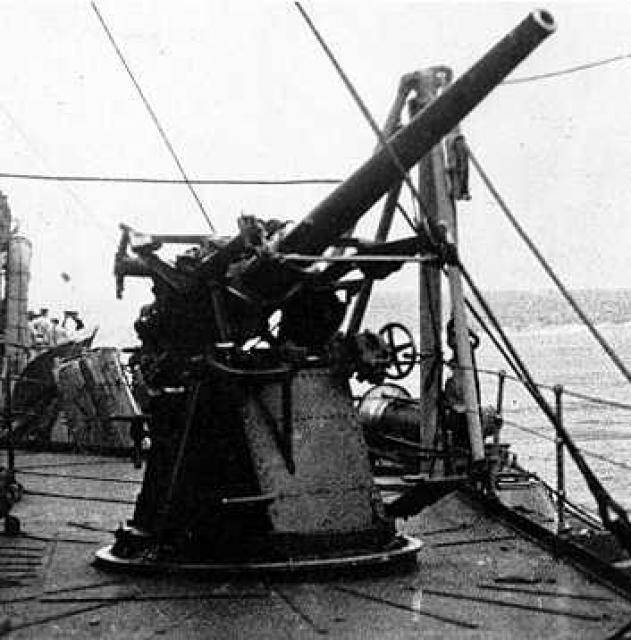
The guns had a good firing sector and were supposed to be used for firing at enemy submarines and small enemy ships.
The short-range anti-aircraft armament was supplemented by the Maxim 7,62-mm machine gun on the bridge and four 47-mm Hotchkiss Mk I guns.
After the outbreak of World War II, anti-aircraft weapons changed in accordance with modernization plans.
Mine torpedo armament
The cruisers were equipped with four paired 533-mm torpedo tubes. Ammunition torpedoes - 16 pieces.
Modernization and refurbishment
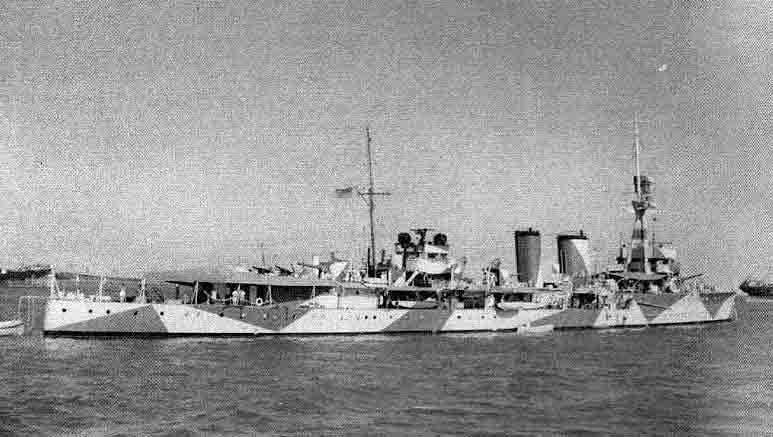
Two cruisers, "Caledon" and "Kassandra" were participants in the ship equipping program aviation... A hangar was mounted on the ships on the starboard side, and launch bridges were laid from the bow gun to the stem, along which the Beardmore WBIII wheeled experimental fighter with folding wings took off.
Aviation equipment remained until the 20s, after which it was dismantled.
In the period from 1918 to 1927, the anti-aircraft armament of all cruisers, except for the deceased Kassandra, was strengthened by the installation of two single-barreled 40-mm Vickers Pom-pom assault rifles and two 47-mm salute guns.
Since only two of the four ships remained in service at the time of mid-1940, only the Caledon and Caradoc were upgraded.
"Caradoc" was modernized in the USA, from October 1941 to February 1942. The ship received two single-barreled Pom-Poms 40 mm from Vickers and five Oerlikons 20 mm.
In addition, the cruiser was equipped with Type 271 and Type 290 radars, with the help of which it was possible to monitor the surface and airspace.
"Caledon" in 1943, as part of a major modernization program, lost both 76-mm guns and all four 47-mm guns.
Instead, they installed on the cruiser:
- three twin mounts of 102 mm guns;
- two twin anti-aircraft guns "Bofors" 40-mm;
- six paired machine guns "Oerlikon" 20-mm.

In 1944, six more 40-mm Bofors anti-aircraft guns and two paired 20 mm Oerlikon submachine guns were added.
Combat service
"Caledon"
He began combat service in the summer of 1917, as the flagship of Commodore W. Cowen, commander of the 1st squadron of light cruisers.
On November 17, 1917, the cruiser took part in the second battle in Heligoland Bay, where British ships tried to prevent German minesweepers from eliminating minefields. In battle, "Caledon" received a 305-mm shell from a German battleship in the armor belt at the waterline. The British were lucky, the shell did not penetrate the armor and did not cause serious damage.
Until the end of the war, the cruiser participated in mine laying, but mainly accompanied the Scandinavian convoys.
November 21, 1918, on the day of the delivery of the German Fleet High seas participated in the escort of German ships in Scapa Flow.
In February 1919, "Caledon" was in the Baltic and was engaged in shelling the city of Ventspils, which was occupied by the troops of Soviet Russia. In the future, the cruiser was regularly engaged in countering Soviet troops until the end of 1919, when it became clear that the intervention had failed. British ships were recalled to the mother country, and the Caledon, together with the Dunedin and a fleet of destroyers, were based in Copenhagen and were patrolling the waters of Estonia and Latvia.
In January 1923, the Caledon, as part of a detachment of ships, took part in an operation to suppress the mutiny in the city of Memel (Klaipeda). The rebellion was initiated by the Lithuanian government, which wanted to return the city to the country from under the Entente protectorate, which was the result.
After that, the Caledon returned to the UK and was transferred to the reserve.

With the outbreak of World War II, the cruiser was taken out of reserve, put into repair, and after that it was sent to the Northern Patrol. The Caledon patrolled vast expanses of the North Atlantic from the Shetland Islands to Iceland. It was an intense service, in the first three weeks more than a hundred ships were stopped, some of which had to be escorted to Kirkwall for further proceedings.
In October-November 1939, the Caledon took part in the search for the German battleships Scharnhorst and Gneisenau, which were pirating in the North Atlantic. The search was unsuccessful, the German ships returned to their bases.
In 1940, the Caledon was sent to the Mediterranean Sea, where she took part in a campaign to Cape Matapan. Together with the cruiser "Calypso" he served on the protection of British battleships. The battleships remained intact, but the Calypso was sunk by an Italian submarine.
In August 1940, HMS Caledon was transferred to the Red Sea, where it was necessary to counteract the Italians who began to seize British Somalia. The British forces in the region were small, so the arriving British and Australian (cruiser Hobart) ships participated in the evacuation of British troops and citizens from Berbera to Aden.
In September 1940, the Caledon took part in escorting numerous convoys through the Suez Canal; in January-February 1941, she participated in the landing in Italian Somalia and Berber. The landing operation in Berbera was successful and the city was taken back.
After completing service in the waters of the Red Sea, "Caledon" was sent to Colombo (Ceylon) for repairs, and then the cruiser was transferred to the Indian Ocean squadron. The squadron was made up mostly of frankly old ships, so the arrival of Colombo can be considered a reinforcement. The cruiser was mainly engaged in convoy operations.
In March 1942, the Caledon was assigned to Task Force B, which played the role of an auxiliary force in the search and destruction of Japanese ships. The group consisted of frankly old ships: the aircraft carrier Hermes, the battleships Ramilles, Royal Sovereign and Revenge, the light cruisers Caledon, the Dragon and the Dutch cruiser Jacob van Heemskerk plus eight destroyers.
The group unsuccessfully searched for the ships of Admiral Nagumo. As a result, Nagumo fled to his bases, raiding Trincomalee and sinking the aircraft carrier Hermes, a destroyer, a corvette and two transports.
Left without air cover, the ships of the group were transferred to the western part of the Indian Ocean, where they were engaged in convoy service and patrolling.
At the end of 1942, the cruiser leaves for Britain for overhaul. After repairs, in March 1944, the cruiser was sent to the Mediterranean again.
In July 1944, the Caledon took part in Operation Dragon for the landing of troops in southern France. In October 1944, the Caledon was sent to the Aegean to support the landing forces liberating the islands. The cruiser supported the operations to liberate Greece, shelled enemy positions near Piraeus and Salamis. The cruiser remained off the coast of Greece until February 1945.
In February, the cruiser was returned to Great Britain, transferred to the reserve and then disposed of.
"Calypso"
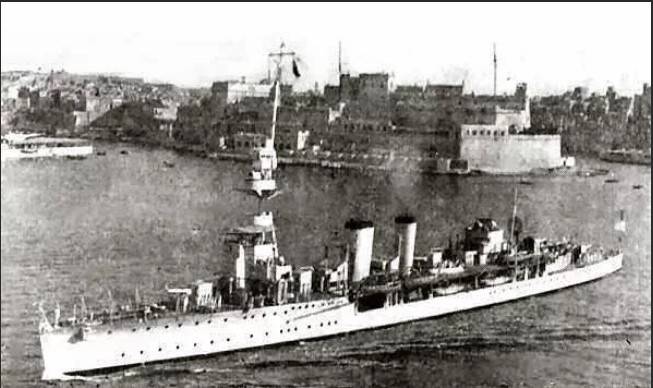
Trawling in the Heligoland region became the baptism of fire for the ship. The cruiser was in the second reconnaissance group along with the Caledon and Galatea. The group ran into the German minesweepers and entered into battle with the covering forces, the German light cruisers "Königsberg", "Nuremberg", "Frankfurt" and "Pillau".
The German cruisers skillfully maneuvering, brought the British under attack from their battleships "Emperor" and "Empress". The British counted on the help of their battle cruisers Tiger, Rhinaun and Repals. But the Germans, as always, fired accurately and the Empress demolished the Calypso conning tower with its 305-mm shell. 10 people were killed, including the cruiser commander.
Further, at the request of the Estonian government, Great Britain sent five light cruisers to aid against Soviet Russia. The ships (Calypso, Kassandra, Caradoc, Ceres and Cardiff) delivered 6 rifles, 500 machine guns and two field guns to Estonia. In addition, German ships made it difficult for the Baltic Fleet to operate against the Baltic states during the Civil War.
On December 26, acting as part of a group of ships with the cruiser "Karadok" and destroyers, he captured the Soviet destroyer "Avtroil", which surrendered without a single shot.
In March 1919, the Calypso was transferred to the Mediterranean. The cruiser made a trip to the Black Sea, where she supported the retreating white troops in the region of Kerch and Crimea with artillery.
In 1922, part of the Greek royal family, which had suffered as a result of a military coup in the country, was taken aboard the Calypso. British King George the Fifth gave the order to rescue relatives, as a result of which "Calypso" took out from Corfu the Greek Prince Andrew, brother of the deposed King Constantine and his family: his wife, four daughters and son Philip, who entered historyas Philip Mountbatten, Duke of Edinburgh, husband of Queen Elizabeth II.
Until 1939, the ship was sent to the reserve.
At the beginning of World War II, the Calypso was returned from the reserve and assigned to the Northern Patrol. The Faroe Islands became the patrolling area, where the ship repeatedly detained ships.
The Calypso took part in the search for the Scharnhorst and Gneisenau, which had sunk the support cruiser Rawalpindi from the escort of the convoy.
In the spring of 1940, the Calypso again finds herself in the Mediterranean Sea, where the cruiser took part in the search for Italian supply vessels going to Africa. On June 12, 1940, the Calypso was torpedoed by the Italian submarine Alpino Bagnolini. After a two-hour battle for survivability, the Calypso sank. 39 crew members were killed. The rest were rescued by the cruiser Caledon and the destroyer Dinty.
The Calypso went down in history as the first ship to be sunk by the Italian fleet in World War II.
"Caradoc"
As well as gathering, he took part in the second battle of Heligoland. Occupying a position in the rear of a group of ships, the "Caradoc" did not participate directly in the battle. His guns did not fire a single shell.
In November 1918, he accompanied the German ships for delivery to Scapa Flow.
As part of a group of cruisers, he fired on Soviet troops near Tallinn and Revel, took part in the capture of the destroyer Avtroil, and landed Finnish troops near Helsinfors.
In January 1920 he was transferred to the Mediterranean. Then there was a voyage to the Black Sea, where "Karadok" was engaged in shelling the positions of Soviet troops, several times disrupting offensive operations. Provided fire support for landings near Odessa and the offensive of the Volunteer Army near Yalta.
In September 1920, the ship was recalled from the Black Sea. The cruiser was briefly assigned to the Chinese station, after which she returned to the metropolis and was sent to the reserve.
The cruiser was returned from the reserve with the outbreak of the Second World War.
He was sent to patrol service in the Atlantic, where he was very successful in searching for German blockade-breakers. The Caradock was intercepted by the tanker Emmy Friedrich, the steamer Rhine, whose crews scuttled their ships to prevent capture.
In October 1941, it underwent a major modernization in New York. Anti-aircraft weapons were reinforced and radars were installed.
Then, until 1943, he was in the Eastern Squadron, based in Durban in South Africa. He was engaged in escorting convoys and patrolling until 1945, when he was withdrawn from the fleet and sent for cutting.
"Cassandra"

The ship bearing the name of the ill-fated Trojan prophet was out of luck. In fact, immediately after entering service, in August 1917, the cruiser ran aground and was damaged. While the repairs were underway, the war ended and the "Kassandra" was sent as part of a group of cruisers to support the independence of the newly formed Baltic countries.
On the way to Tallinn, on December 5, 1918, the ship ran into a mine from a previously unknown minefield, apparently set up by the Germans near the Saaremaa island in the Gulf of Finland.
The cruiser sank very quickly, but the destroyers Vendetta and Westminster saved the entire crew, except for 11 people who died in the explosion.
What about these ships? For their time, these were very good ships, although their armament left much to be desired. Yes, it was from them that the light cruisers of Japan with approximately the same composition of weapons were "written off", only the guns were not 152-mm, but 140-mm.

Otherwise, the fate of the ships was similar: the Caledon-class cruisers entered the Second World War as completely outdated ships, and therefore played exclusively second or even third roles on the stage of the theater of military operations.
The only drawback for them is survivability. Otherwise, they were pretty decent "old men" who, as you can see, could pull the military strap throughout the war.
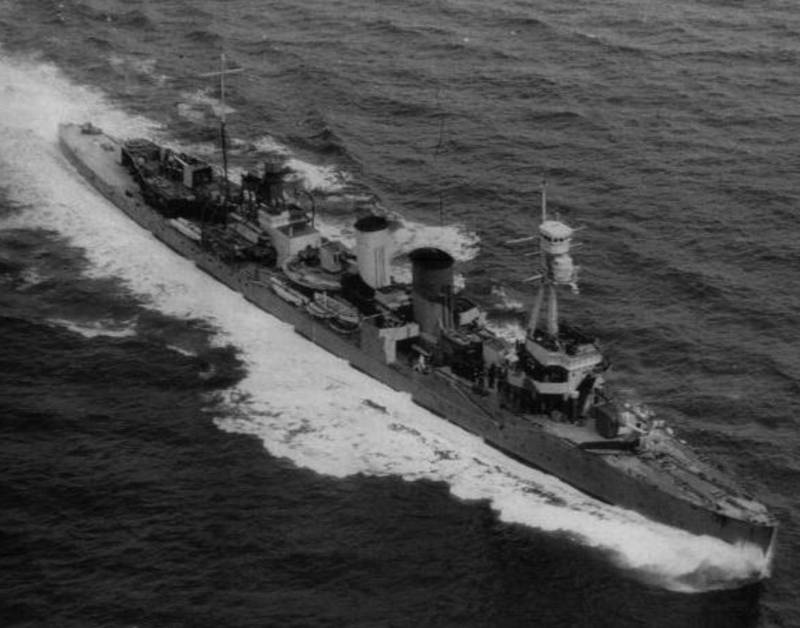
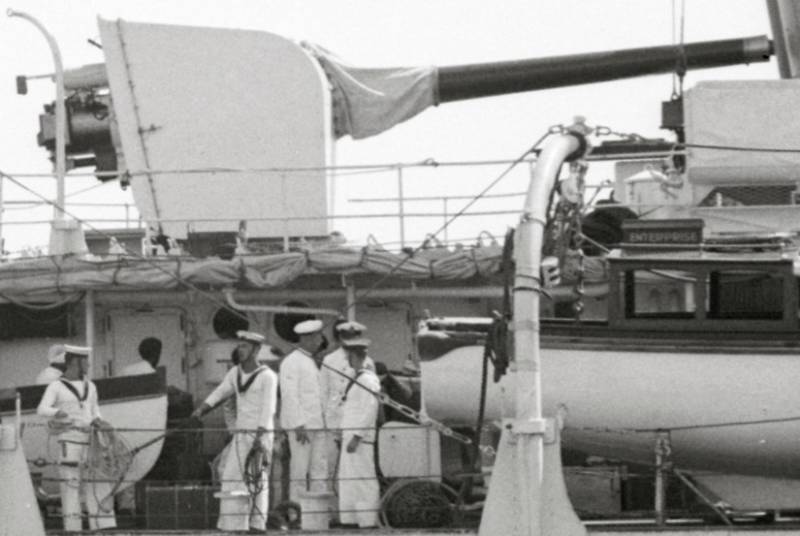








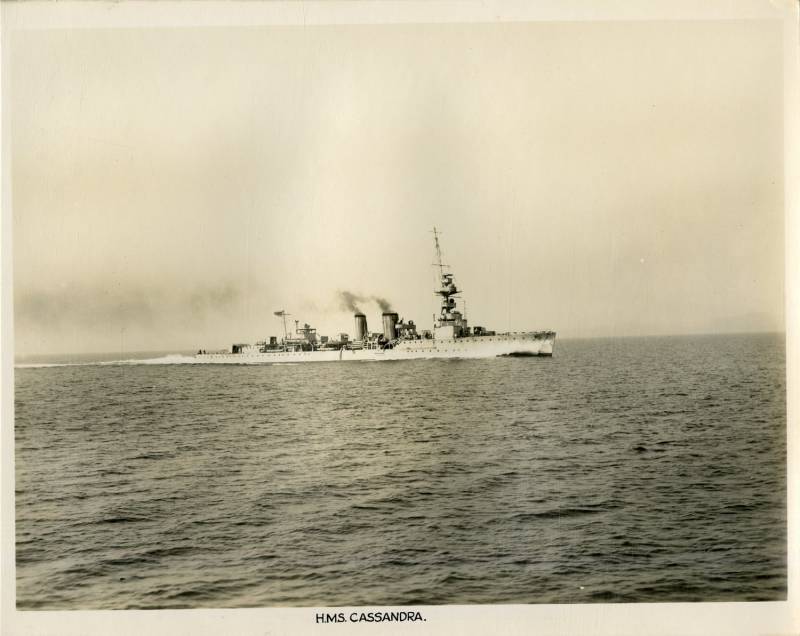
Information